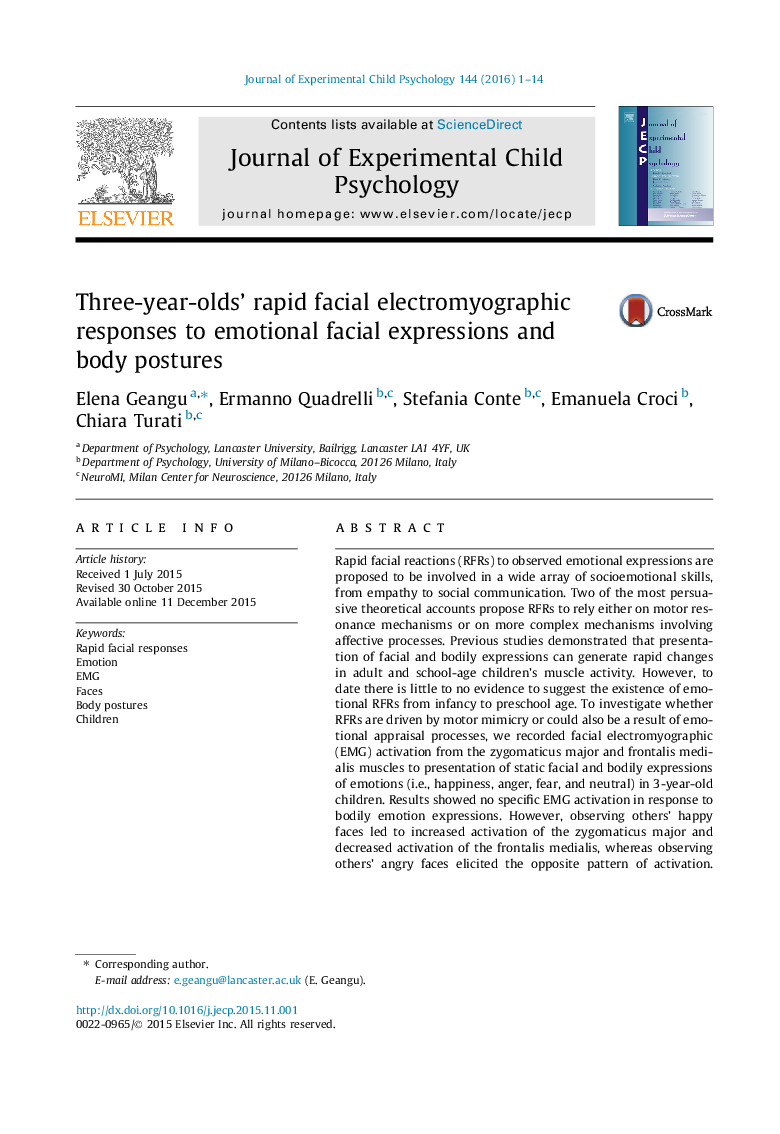| کد مقاله | کد نشریه | سال انتشار | مقاله انگلیسی | نسخه تمام متن |
|---|---|---|---|---|
| 917862 | 1473468 | 2016 | 14 صفحه PDF | دانلود رایگان |
• 3-years-old children show rapid facial responses (RFRs) to others’ emotional faces.
• Observing happy faces selectively activates the smiling muscle (zygomaticus major).
• Observing angry faces elicits RFRs specific for fear (frontalis medialis).
• Emotional bodies do not trigger emotion selective activation of the facial muscles.
• Electromyography is a viable tool for investigating emotional RFRs in pre-schoolers.
Rapid facial reactions (RFRs) to observed emotional expressions are proposed to be involved in a wide array of socioemotional skills, from empathy to social communication. Two of the most persuasive theoretical accounts propose RFRs to rely either on motor resonance mechanisms or on more complex mechanisms involving affective processes. Previous studies demonstrated that presentation of facial and bodily expressions can generate rapid changes in adult and school-age children’s muscle activity. However, to date there is little to no evidence to suggest the existence of emotional RFRs from infancy to preschool age. To investigate whether RFRs are driven by motor mimicry or could also be a result of emotional appraisal processes, we recorded facial electromyographic (EMG) activation from the zygomaticus major and frontalis medialis muscles to presentation of static facial and bodily expressions of emotions (i.e., happiness, anger, fear, and neutral) in 3-year-old children. Results showed no specific EMG activation in response to bodily emotion expressions. However, observing others’ happy faces led to increased activation of the zygomaticus major and decreased activation of the frontalis medialis, whereas observing others’ angry faces elicited the opposite pattern of activation. This study suggests that RFRs are the result of complex mechanisms in which both affective processes and motor resonance may play an important role.
Journal: Journal of Experimental Child Psychology - Volume 144, April 2016, Pages 1–14
